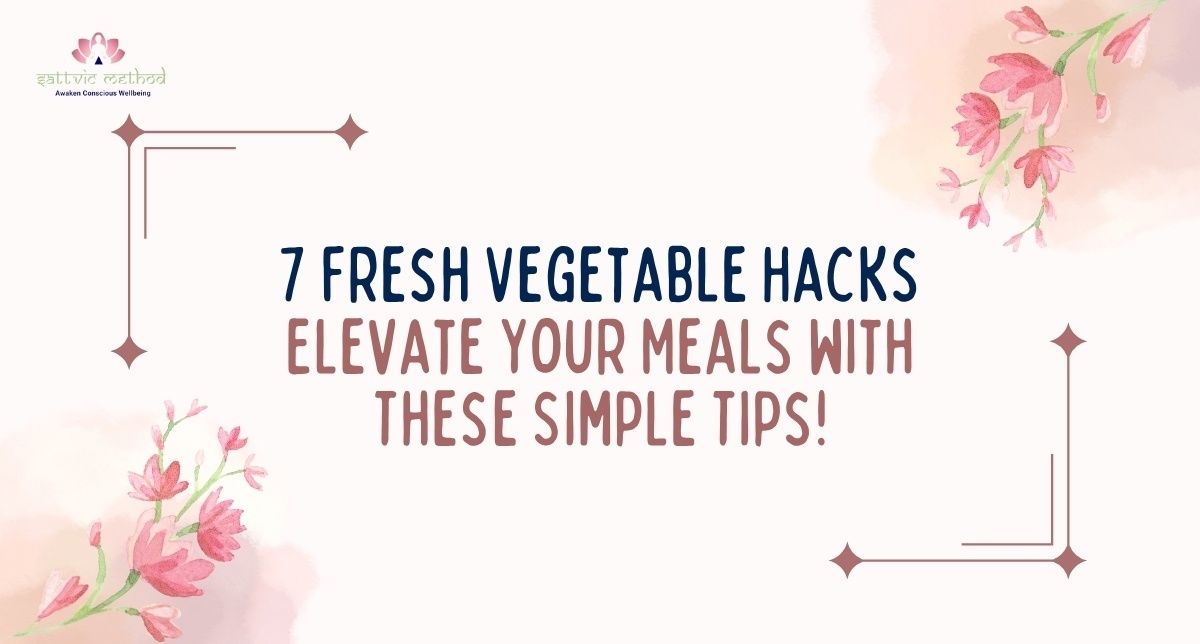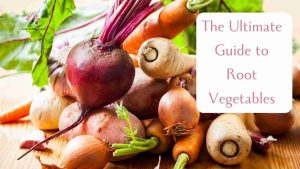7 Fresh Vegetable Hacks: Elevate Your Meals With These Simple Tips!
Are you ready to transform your meals from mundane to magnificent? Embracing fresh vegetables is a surefire way to elevate your culinary creations, but sometimes it takes a little creativity to unlock their full potential. In this article, we’re serving up 10 fresh vegetable hacks that will revolutionize the way you cook and enjoy your veggies. Whether you’re a seasoned chef or a cooking novice, these simple tips will help you save time, reduce waste, and add bursts of flavor and texture to your dishes. Say goodbye to bland salads and steamed greens, get ready to explore unique ways to enhance your meals with vibrant, fresh produce. Dive in and discover how these innovative hacks can make healthy eating not just enjoyable, but downright delicious!
The Importance of Fresh Vegetables in Your Diet
Fresh vegetables are a cornerstone of a healthy diet, offering a wealth of nutrients that are essential for maintaining overall well-being. They are packed with vitamins, minerals, antioxidants, and dietary fiber, all of which play crucial roles in supporting bodily functions. For instance, leafy greens like spinach and kale are rich in iron and calcium, while bell peppers and tomatoes are loaded with vitamin C. Consuming a variety of vegetables ensures that your body receives a broad spectrum of nutrients, which can help boost your immune system, improve digestion, and reduce the risk of chronic diseases.
In addition to their nutritional benefits, fresh vegetables can also enhance the sensory experience of your meals. Their vibrant colors, crisp textures, and varied flavors can turn an ordinary dish into a feast for the senses. Whether you’re preparing a simple salad, a hearty soup, or a gourmet entrée, incorporating fresh vegetables can add complexity and depth to your culinary creations. Moreover, the natural sweetness and umami found in many vegetables can help you cut back on added sugars and salts, making your meals not only more nutritious but also more flavorful.
Furthermore, prioritizing fresh vegetables in your diet can have positive environmental and economic impacts. By choosing locally grown produce, you can reduce your carbon footprint and support local farmers. Additionally, fresh vegetables are often more affordable than processed foods, making them a cost-effective choice for budget-conscious individuals. Embracing fresh vegetables can therefore contribute to a healthier lifestyle, a more sustainable food system, and a more enjoyable eating experience.
Hack 1: Quick Vegetable Prep Techniques
One of the biggest barriers to incorporating more fresh vegetables into your diet is the time and effort required for preparation. However, with a few quick prep techniques, you can make the process more efficient and less daunting. Start by investing in a good set of kitchen tools, such as a sharp chef’s knife, a mandoline slicer, and a food processor. These tools can significantly speed up the chopping, slicing, and dicing processes, allowing you to prepare vegetables in a fraction of the time.
Another time-saving technique is to batch-prep your vegetables at the beginning of the week. Spend an hour or so washing, peeling, and cutting a variety of vegetables, then store them in airtight containers in the refrigerator. This way, you’ll have ready-to-use vegetables on hand for salads, stir-fries, and snacks throughout the week. You can also pre-cook certain vegetables, such as roasting a tray of sweet potatoes or blanching a batch of green beans, to streamline meal preparation even further.
For those busy weeknights when you need to get dinner on the table quickly, consider using frozen vegetables. While fresh is often best, frozen vegetables can be a convenient and nutritious alternative. They are typically flash-frozen at peak ripeness, which helps preserve their nutrient content. Simply steam or sauté them straight from the freezer, and you’ll have a healthy side dish or ingredient ready in minutes. With these quick prep techniques, incorporating more fresh vegetables into your diet can be both easy and time-efficient.
Hack 2: Creative Ways to Store Vegetables
Proper storage is key to keeping your vegetables fresh and extending their shelf life. One creative way to store vegetables is to use reusable produce bags made of mesh or cotton. These bags allow for better air circulation than plastic, which can help prevent moisture buildup and spoilage. Additionally, storing vegetables in their original packaging or in perforated plastic bags can help maintain their freshness by allowing them to “breathe.”
For leafy greens and herbs, consider using a salad spinner to remove excess moisture after washing, then storing them in a container lined with a paper towel. The paper towel will absorb any residual moisture, helping to keep the greens crisp and fresh. Another option is to place the stems of herbs like cilantro or parsley in a jar of water, much like you would with flowers, and cover the leaves loosely with a plastic bag. This method can help extend the life of your herbs, keeping them vibrant and flavorful for longer.
Root vegetables, such as carrots, beets, and potatoes, can be stored in a cool, dark place like a pantry or cellar. Keep them in a paper bag or a wooden crate to promote air circulation and prevent them from sprouting or becoming rubbery. For vegetables with a high water content, like cucumbers and zucchini, it’s best to store them in the refrigerator’s crisper drawer, which is designed to maintain an optimal humidity level. By using these creative storage methods, you can reduce waste and ensure that your vegetables stay fresh and delicious until you’re ready to use them.
Hack 3: Enhancing Flavor with Simple Seasoning
Seasoning can make a world of difference when it comes to enhancing the flavor of fresh vegetables. A simple yet effective way to elevate your veggies is to use a combination of herbs and spices. Fresh herbs like basil, thyme, and rosemary can add a burst of flavor and aroma, while spices like cumin, paprika, and turmeric can introduce warmth and depth. Don’t be afraid to experiment with different herb and spice blends to find the perfect complement for each type of vegetable.
Another easy seasoning hack is to use flavored oils and vinegars. Infused olive oils, such as garlic or chili oil, can add a rich, savory note to roasted or sautéed vegetables. Similarly, flavored vinegars, like balsamic or apple cider vinegar, can provide a tangy contrast that brightens up the dish. A drizzle of lemon or lime juice can also enhance the natural flavors of vegetables, adding a refreshing zing. When seasoning, remember that a little goes a long way—start with a small amount and adjust to taste.
Don’t underestimate the power of salt and pepper. Seasoning vegetables with sea salt or kosher salt can help draw out their natural flavors and enhance their texture. Freshly ground black pepper adds a hint of heat and complexity. For an extra layer of flavor, try using finishing salts, such as fleur de sel or smoked salt, which can add a unique touch to your dishes. By mastering the art of simple seasoning, you can transform ordinary vegetables into extraordinary culinary delights.
Hack 4: Unique Cooking Methods for Better Texture
The texture of vegetables can greatly influence your enjoyment of them, and experimenting with unique cooking methods can help you achieve the perfect bite. One such method is roasting, which caramelizes the natural sugars in vegetables and creates a crispy, golden exterior. Roasting works particularly well for root vegetables, Brussels sprouts, and cauliflower. Simply toss the vegetables with a bit of olive oil, salt, and pepper, spread them out on a baking sheet, and roast them in a hot oven until they are tender and caramelized.
Another technique to explore is grilling. Grilling vegetables imparts a smoky flavor and charred texture that can elevate any dish. Try grilling bell peppers, zucchini, eggplant, and corn on the cob for a delicious and visually appealing side dish. Marinating the vegetables beforehand can add even more flavor. For a quick and easy option, use a grill pan on the stovetop if outdoor grilling is not an option.
Steaming is a gentle cooking method that preserves the nutrients and vibrant colors of vegetables. Steamed vegetables can be a light and healthy addition to any meal. To add more flavor, steam the vegetables over a broth or add aromatics like garlic, ginger, or fresh herbs to the steaming water. For an Asian-inspired twist, try stir-frying vegetables in a hot wok with a bit of sesame oil and soy sauce. The high heat cooks the vegetables quickly, retaining their crispness and bright colors. By experimenting with these unique cooking methods, you can achieve a variety of textures that make eating vegetables more enjoyable.
Hack 5: Sneaking Vegetables into Your Favorite Dishes
If you or your family members are picky eaters, sneaking vegetables into your favorite dishes can be a great way to boost their nutritional content without compromising on taste. One easy method is to add finely chopped or grated vegetables to sauces, soups, and stews. For example, you can mix grated carrots or zucchini into marinara sauce, or add finely chopped spinach to a hearty beef stew. These vegetables will blend seamlessly into the dish, adding nutrients and moisture without being overly noticeable.
Another clever trick is to incorporate vegetables into baked goods. Pureed vegetables like pumpkin, sweet potato, or beetroot can be added to muffins, brownies, and cakes, providing natural sweetness and moisture. Cauliflower rice or zucchini noodles can be used as a low-carb alternative to traditional grains in dishes like stir-fries, casseroles, and pasta salads. By replacing some of the starches with vegetables, you can enjoy your favorite comfort foods in a healthier way.
Smoothies are another excellent vehicle for sneaking in vegetables. Adding a handful of spinach, kale, or avocado to your fruit smoothie can boost its nutrient content without altering the flavor. For a creamy texture, try blending in cooked and cooled cauliflower or sweet potato. The natural sweetness of fruits like bananas, berries, and mangoes will mask the taste of the vegetables, making it easy to enjoy a nutrient-packed drink. By incorporating these sneaky techniques, you can effortlessly increase your vegetable intake and enjoy the benefits of a healthier diet.
Hack 6: Using Leftover Vegetables Effectively
Leftover vegetables often end up forgotten in the back of the fridge, but with a bit of creativity, you can turn them into delicious new dishes. One way to use up leftover vegetables is to make a hearty frittata or omelet. Simply sauté the vegetables in a bit of oil, pour beaten eggs over them, and cook until set. You can also add cheese, herbs, and spices to enhance the flavor. This is a great way to enjoy a nutritious and filling breakfast, brunch, or even dinner.
Another idea is to make a vegetable stir-fry. Start by heating a bit of oil in a large skillet or wok, then add your leftover vegetables and stir-fry them over high heat. You can also add protein like tofu, chicken, or shrimp, as well as a flavorful sauce made from soy sauce, garlic, ginger, and a touch of honey or brown sugar. Serve the stir-fry over rice or noodles for a quick and satisfying meal.
Leftover vegetables can also be used to make soups and stews. Simply add them to a pot with some broth, seasonings, and additional ingredients like beans, grains, or meat. Let everything simmer until the flavors meld together, then blend some or all of the soup for a creamy texture. You can also use leftover vegetables to make veggie patties or fritters. Mix the vegetables with breadcrumbs, eggs, and seasonings, then form into patties and pan-fry until golden brown. These versatile ideas can help you reduce food waste and make the most of your leftover vegetables.
Hack 7: Growing Your Own Vegetables at Home
There’s nothing quite like the satisfaction of growing your own vegetables at home. Not only does it provide you with a fresh and readily available supply of produce, but it also allows you to have greater control over the quality and safety of your food. Whether you have a spacious backyard or a small balcony, you can start a vegetable garden that suits your space and lifestyle. Begin by selecting vegetables that are well-suited to your climate and growing conditions.
One of the easiest ways to start growing your own vegetables is by planting herbs in pots or containers. Herbs like basil, parsley, and mint are relatively low-maintenance and can thrive in small spaces. They can also add a burst of flavor to your dishes. For a more extensive garden, consider planting vegetables like tomatoes, peppers, lettuce, and radishes. These vegetables are relatively easy to grow and can provide a bountiful harvest with proper care and attention.
If you’re limited on outdoor space, you can still grow vegetables indoors using hydroponic systems or vertical gardening techniques. Hydroponic systems allow you to grow plants without soil, using nutrient-rich water instead. Vertical gardening involves growing plants upward rather than outward, making efficient use of available space. Both methods can be highly productive and are ideal for apartment dwellers or those with limited garden space. By growing your own vegetables, you can enjoy the freshest produce possible while gaining a deeper appreciation for the food you eat.
Conclusion and Encouragement to Experiment with Vegetables
Embracing fresh vegetables and incorporating these simple hacks into your cooking routine can transform your meals and elevate your culinary skills. From efficient prep techniques and creative storage solutions to enhancing flavors with simple seasoning and exploring unique cooking methods, there are countless ways to make vegetables the star of your dishes. By sneaking vegetables into your favorite meals and finding innovative uses for leftovers, you can maximize their nutritional benefits and reduce waste.
Growing your own vegetables at home provides a rewarding and sustainable way to enjoy fresh produce year-round. Whether you have a large garden or a small indoor space, there are options available to suit your needs and preferences. The process of nurturing plants from seed to harvest can deepen your connection to the food you eat and provide a sense of accomplishment.
Ultimately, the key to enjoying fresh vegetables is to experiment and have fun in the kitchen. Don’t be afraid to try new recipes, explore different cooking methods, and play with flavors and textures. By embracing the versatility and abundance of fresh vegetables, you can create delicious, nutritious, and visually appealing meals that will delight your taste buds and support your overall health. So go ahead, get creative, and elevate your meals with these simple vegetable hacks!




